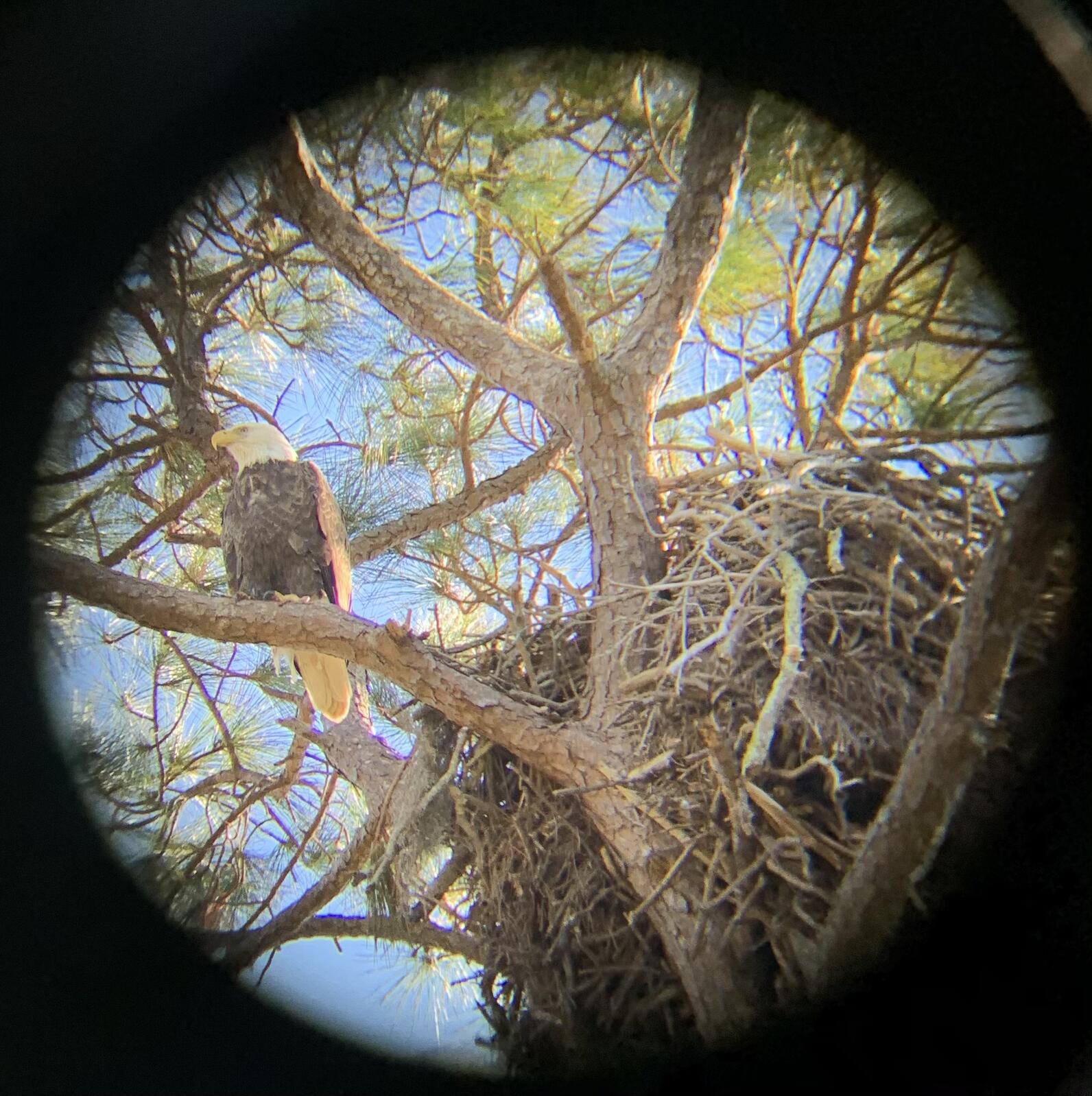
by Amanda Hull
The Bald Eagle nest sits high up in a longleaf pine on the west side of the University of West Florida’s (UWF) campus, within The Baars-Firestone Wildlife Sanctuary. From the main entrance of the trail, it is about a half-mile walk to the longleaf pine; the tree sits only about fifty feet away from the trail, so the large nest is a prominent feature for any passersby.
The first time I saw the nest I was astounded by its size; I had never seen an eagles’ nest at such close range before. With my binoculars, I was able to see all the intricate details of this nest, including the many reconstruction efforts made by the eagles over the years.
The eagle pair, when separate, are difficult to differentiate from each other, but when I am lucky enough to see them together, the difference in size is very apparent: the females are about 33% larger than males.
My Conservation Leadership Initiative (CLI) mentor, Jim Brady of Francis Weston Audubon Society, and I go out to monitor the nest together about every other week, always in the early morning, hoping to see the eagles going to or coming back from finding their first meal of the day. It is not often that we see either of the eagles right as we are approaching the nest. While we are monitoring, we observe for any changes or damages to the nest.
On a normal monitoring day, we walk to the nest and observe for about an hour. Some days we will observe the nest, then walk the trail a bit, then circle around and make our way back to the nest, always keeping an eye out for our feathered friends.
I have become well-versed in the call of the eagle since we started monitoring the nest. Usually, we hear one of the eagles before we see them. Often, we joke that the eagles have a sense of humor because we could be out on the trail for over an hour or two and spot nothing, but as we are leaving, we will hear the call of the eagle as if they just wanted us to know they are still there.
This experience has taught me how much I enjoy speaking to the people who walk the trail every day. The frequent dog walkers and joggers have been able to help us locate certain trees, besides the nesting tree, that the eagles commonly use as a perch. Sometimes, these people have helped to reassure us at times when the eagles are being elusive, letting us know they just saw the eagles a day or two before.
The UWF Bald Eagle nest sits in a busy area. From the information we have received from previous monitors and the people who frequently walk the trail, the nest itself has been in that location over 20 years. We can only assume that the nest has had different residents throughout the years. After years of tropical storms and hurricanes, foliage that provided privacy for the nest is no longer there. Now the nest is so exposed, it is hard to miss as you are walking by.
Being able to easily spot the nest is great for the people that come to see the eagles, but as monitors we worry that the changes in the area, and the proximity to human disruptions, may ultimately cause the eagles to abandon the nest. Luckily, we have not seen any evidence of that.
In recent weeks, our nest monitoring has included extra efforts to spot eaglets. Seeing hatchlings in the nest is difficult since the nest is so large and the tree is up so high, but the hope of seeing them is always exciting and it motivates us to monitor the nest more frequently.
Through my regular eagle monitoring, I have learned both patience and so much about the beautiful birds themselves. Monitoring this nest has allowed me to observe the eagles’ day-to-day life up close, and in a way, I feel a sense of responsibility for them to make sure they remain safe. Overall, I am grateful for this experience, and I will continue eagle monitoring for a long time to come.
Amanda Hull is an Environmental Science major at the University of West Florida.
To learn more about the Conservation Leadership Initiative, click here; to learn more about EagleWatch, click here.




